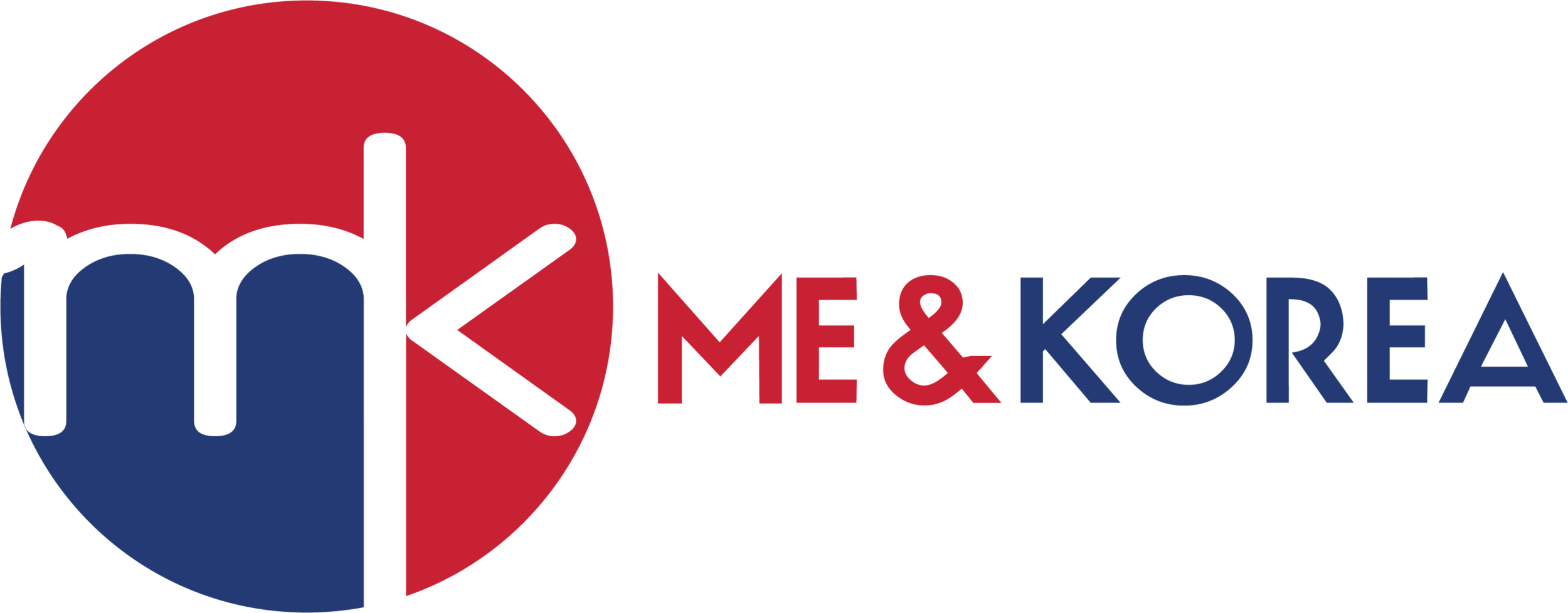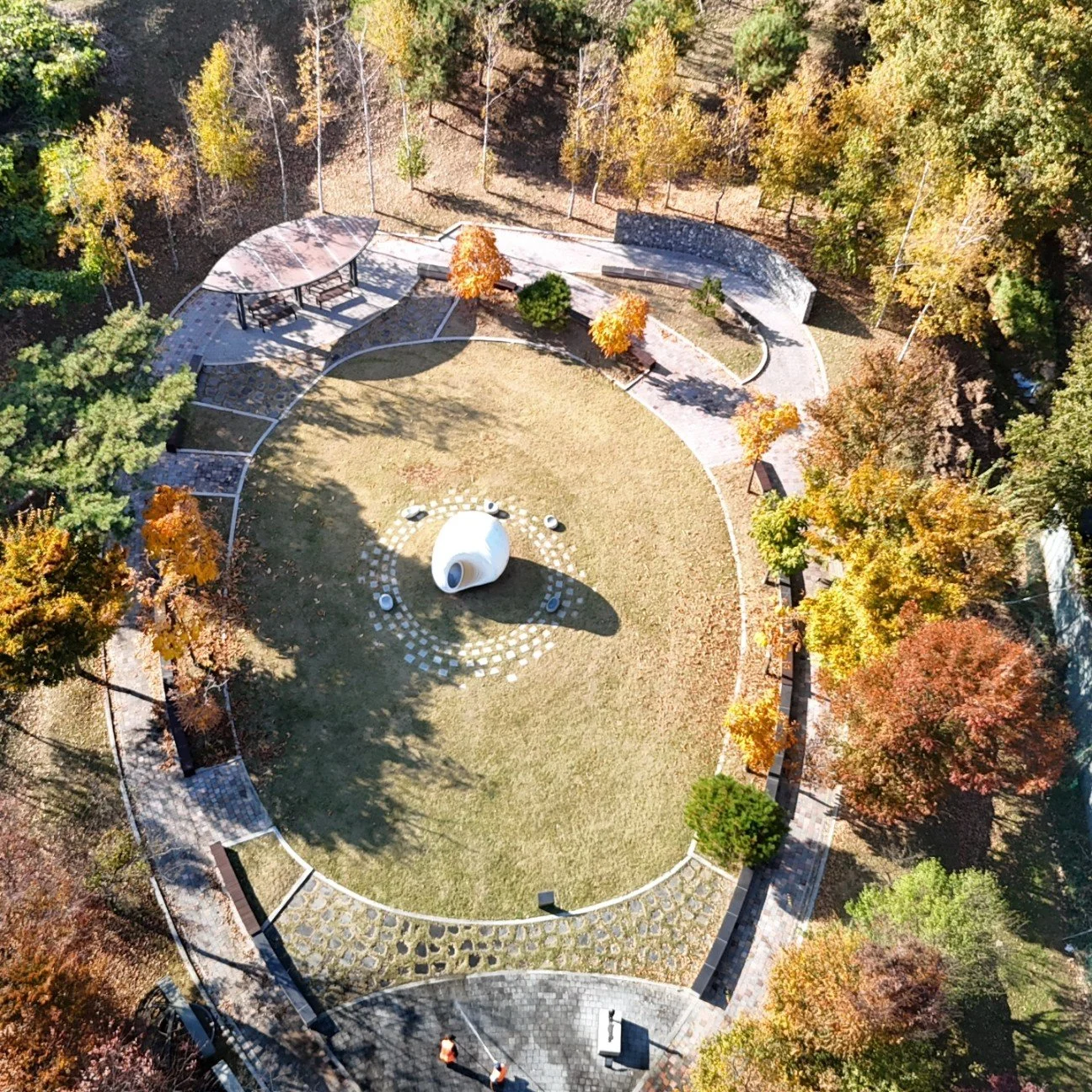About the Park
Omma Poom History
The city of Paju, Korea is located just south of Panmunjeom at the 38th parallel and Demilitarized Zone. Beginning in 2017, Paju began developing a memorial park named Omma Poom, dedicated to the approximately 200,000 children who were sent from Korea to be adopted and raised around the world. Set on the grounds of the former U.S. military base Camp Howze, the park’s location is equally significant. Originally established in 1953 and returned to South Korea in 2007, the transformation of this land into a memorial park marks a powerful shift from a history of division to one of reconciliation and healing.
In September of 2018, the park was formally dedicated at a ceremony attended by local government officials, adoptees from all over the world, birth families, and supporters of the adoptee community. For the dedication, Korean adoptees were invited to submit photos and letters with personal messages, to be displayed at the ceremony. Me & Korea received an overwhelming number of submissions, with 650 total photos and 60 letters contributed. More than ever, adoptees wanted to share, connect, and have their voices heard.
Since the dedication, work on the park has continued, with its formal opening taking place in the summer of 2025.
A Space for Reflection and Healing
The park’s name, Omma Poom, carries deep significance: "Omma" means "mother" in Korean, and "Poom" evokes the comfort of a mother’s embrace. The park is designed to serve as both a tribute to the enduring bond between adoptees and their birth families, and a space for healing the wounds caused by decades of separation.
Omma Poom is open to the public year-round.
For information on how to get to the park and current exhibits, please read below.
Getting to Omma Poom
The best way to reach Omma Poom Park is via subway and/or taxi.
If you are taking a subway, take the Gyeongui–Jungang Line to Yadang Station or Geumneung Station. From there, take a 15-minute taxi ($10-15) to the park.
You can also take a taxi directly from Seoul, which will cost about $50 and take approximately 1 hour. When taking a taxi, you can show the driver the Naver Maps address or take a Kakao call-taxi and directly input the address yourself.
If you have any questions regarding navigating to Omma Poom park, please email info@meandkorea.org.
Park Features
Once completed, Omma Poom will feature artwork and special installations created by Korean adoptees as well as local artists, each with unique meaning. Explore these works below.
bLOSSom
Mural, leah forester
In October 2024, Leah Forester, an adoptee residing in Southern California, created an artwork that was painted on the wall of Omma Poom with the assistance of fellow adoptee Karen Woodburn, in preparation for the park’s public opening.
The word loss is nestled within blossom, a subtle reminder that from our deepest sorrows, new beginnings can arise. It is through the weight of grief that we are often transformed, for in the pain of what we have lost, we find the seeds of what we can become. Just as a flower blooms after enduring the harshness of winter, so too do we, in the midst of our heartache, discover the potential for renewal. In the emptiness left by loss, there is space for growth, and in that space, we blossom into something new, something stronger.
The faceless woman embodies the image of our birth mother in our hearts. She holds her pregnant belly, contemplating the life of the unborn child. The skirt, woven with culture, language, heritage, and identity, falls apart into fragments and drifts away from her. Those fragments become the hibiscus, the flower that symbolizes the resilience of the Korean people.
The stories of adoptees may sometimes seem as difficult to hold onto as the scattered pieces of the skirt. However, through our journey back to the embrace of our mother, the seeds that sprout from loss bloom into whole and beautiful flowers.
Shadow Child
Sculpture, Woonsook Kim
A woman standing in the wind embraces her empty bosom. She looks down on her long, dark shadow. Her shadow holds a baby— the child she buried in her heart.
Mother and Son
Sculpture
Made in 1985 by the Late Nam Young-Won, Director of Gynecology at the Bu-in Clinic, who helped thousands of babies come into the world.
Dr. Nam found the sight of a mother holding her baby and nursing them so beautiful, he created this statue to honor all mothers around the world.
Donor: Kim Joo Hyun (Director of Rehabilitation Clinic), Son of Dr. Nam Young-Won
Mother’s Arms
Sculpture, Wang Kwang Hyun
This artwork shapes the image of being put around in mother's arms who is wearing a white ramie summer blouse.
The shape of circles gradually gathering suggests a meaning of "returning to mom's arms"
This artwork also expresses the love of motherland metaphorically through drawing Siberian chrysanthemum which means mother's love.
The Wall of Names
A rock wall in the sculpture garden showcases hand-painted name tags, featuring names and birth dates from Korean adoptees around the world.
To learn more about adding your own name tag, please click here.
Adoptee Voices at the Peace Museum
This new indoor exhibit builds upon the original temporary outdoor installation from 2018, which featured the photos and messages of more than 700 adoptees. It serves as a powerful tribute to the stories of Korean adoptees in Korea.
Officially open as of November 2025, the Peace Museum is open to the public. If you would like to learn more about adding your photo to the exhibit, please click here.
If you plan to visit the Peace Museum, you may wish to contact Me & Korea to confirm hours.









